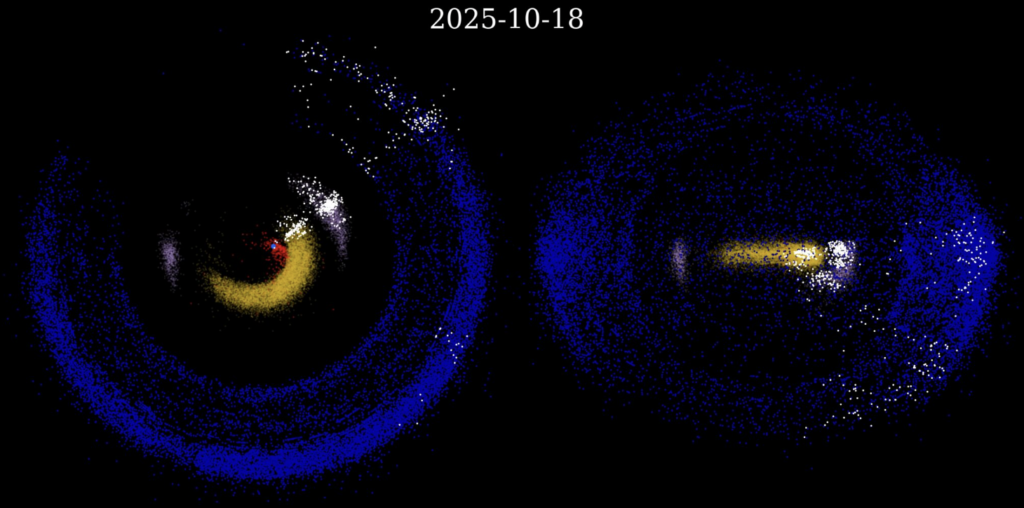In preparation for the Rubin Observatory’s upcoming ten-year Legacy Survey of Space and Time (LSST), we helped develop Sorcha, a survey simulator tuned for LSST. Sorcha models the detection and discovery of a model solar system population by a model Rubin Observatory, allowing us to conduct synthetic ‘test’ surveys with different conditions and environments.

The first major result with Sorcha are the predictions of a high-fidelity simulation of our best current expectations for LSST against our best current understanding of the solar system. We find that Rubin will observe 5.4 million asteroids including millions with sufficient data for precise color fits and hundreds of thousands with shapes revealed through their rotational light curves.
Even more exciting than these predictions is Sorcha’s potential as a tool for debiasing — applying the measured survey efficiency to a model population, allowing for fair comparisons between Rubin’s real observationally-biased discovery catalogs and theorists’ models of the intrinsic distributions of solar system object parameters.
